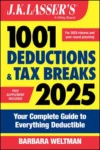Economic Stimulus Package
On January 24, 2008, President Bush and leaders of the House agreed to a $150 billion tax package intended to put money into the economy quickly.
The winners
Singles with adjusted gross income (AGI) up to $75,000 would receive refund checks of $600. For joint filers with adjusted gross income up to $150,000 refund checks would be $1,200. Anyone eligible for this check would also get $300 per child (with no limit on family size). Thus, a family of four could see a check for $1,800 ($1,200 for the joint filers, plus $600 for two children).
Workers who earn at least $3,000 a year but pay no taxes would also get a refund check-up to $300.
The checks could be paid as early as May of this year. They would be sent separately from taxpayers' 2007 tax refund checks. Rebate and refund checks could be deposited electronically, speeding receipt for taxpayers.
The losers
Retirees who don't pay taxes on their retirement income would not receive any refund check.
Anyone with income above set limits would also be frozen out of this tax break. The rebate amount would be reduced by 5% for each $1 over the income limit, so that joint filers, for example, with AGI of at least $174,000 would receive no rebate.
Small businesses
The first-year expensing limit for purchasing equipment and software, currently set to be $128,000 in 2008, would be fixed at $250,000 for companies making total investments of no more than $750,000.
Businesses would also be entitled to 50% bonus depreciation, a measure to accelerate depreciation on certain capital investments in 2008.
The prospects
The Senate will not be discussing the stimulus package for a week or more and has suggested it will add measures, such as extending unemployment benefits. This could make the package too costly and result in no package at all.
Declining balance method
A rapid depreciation method determined by a constant percentage based on useful life and applied to the adjusted basis of the property.



